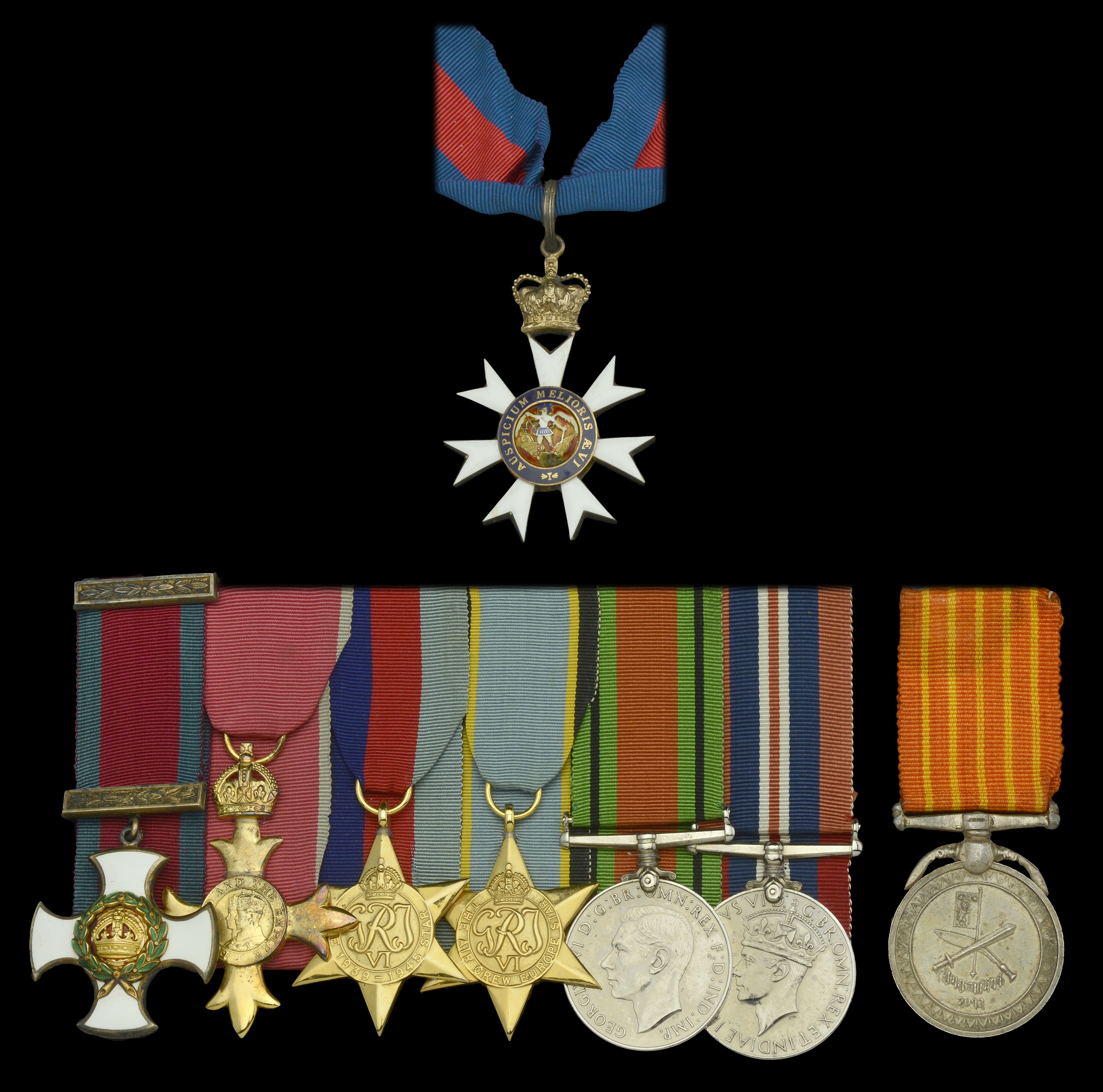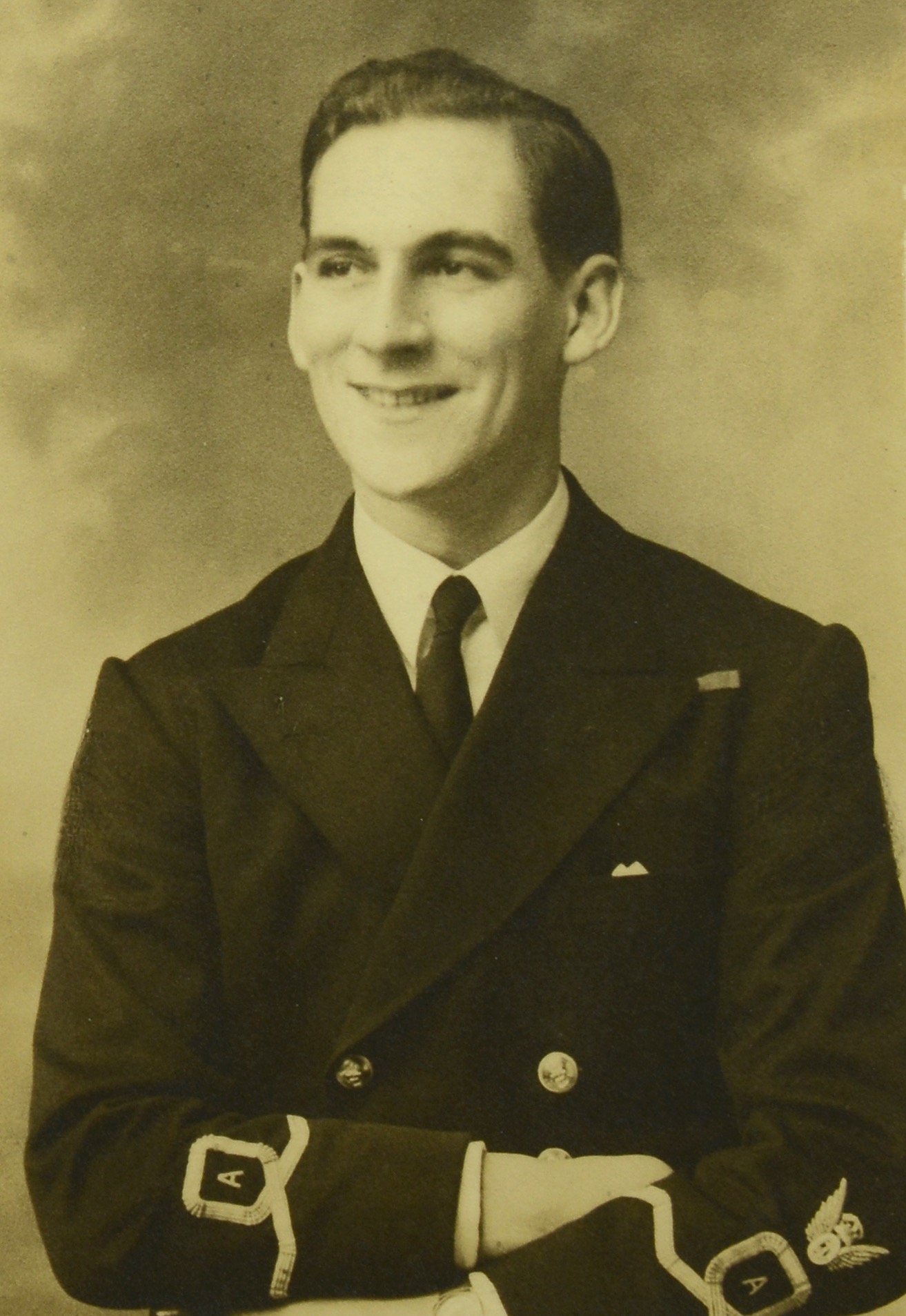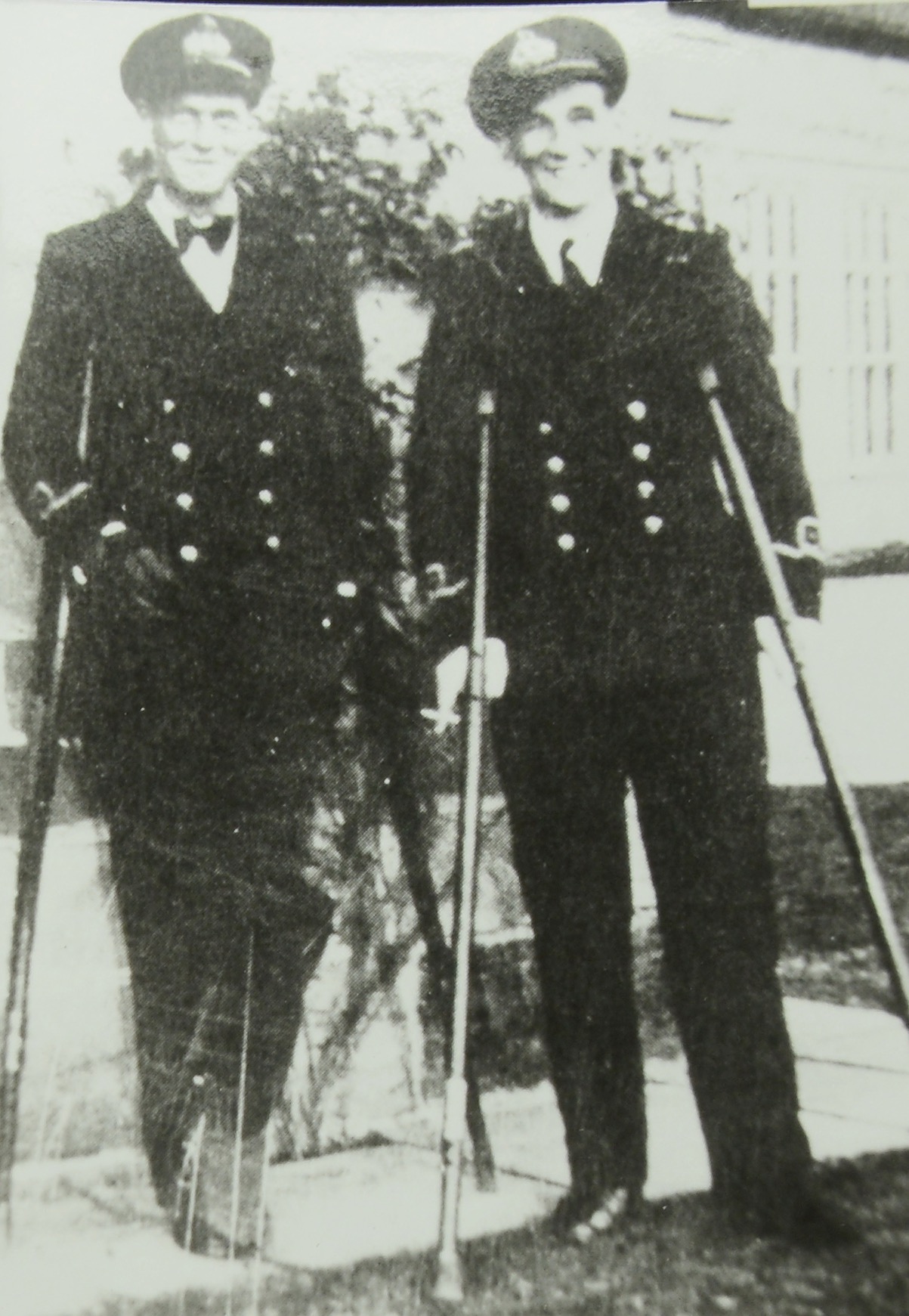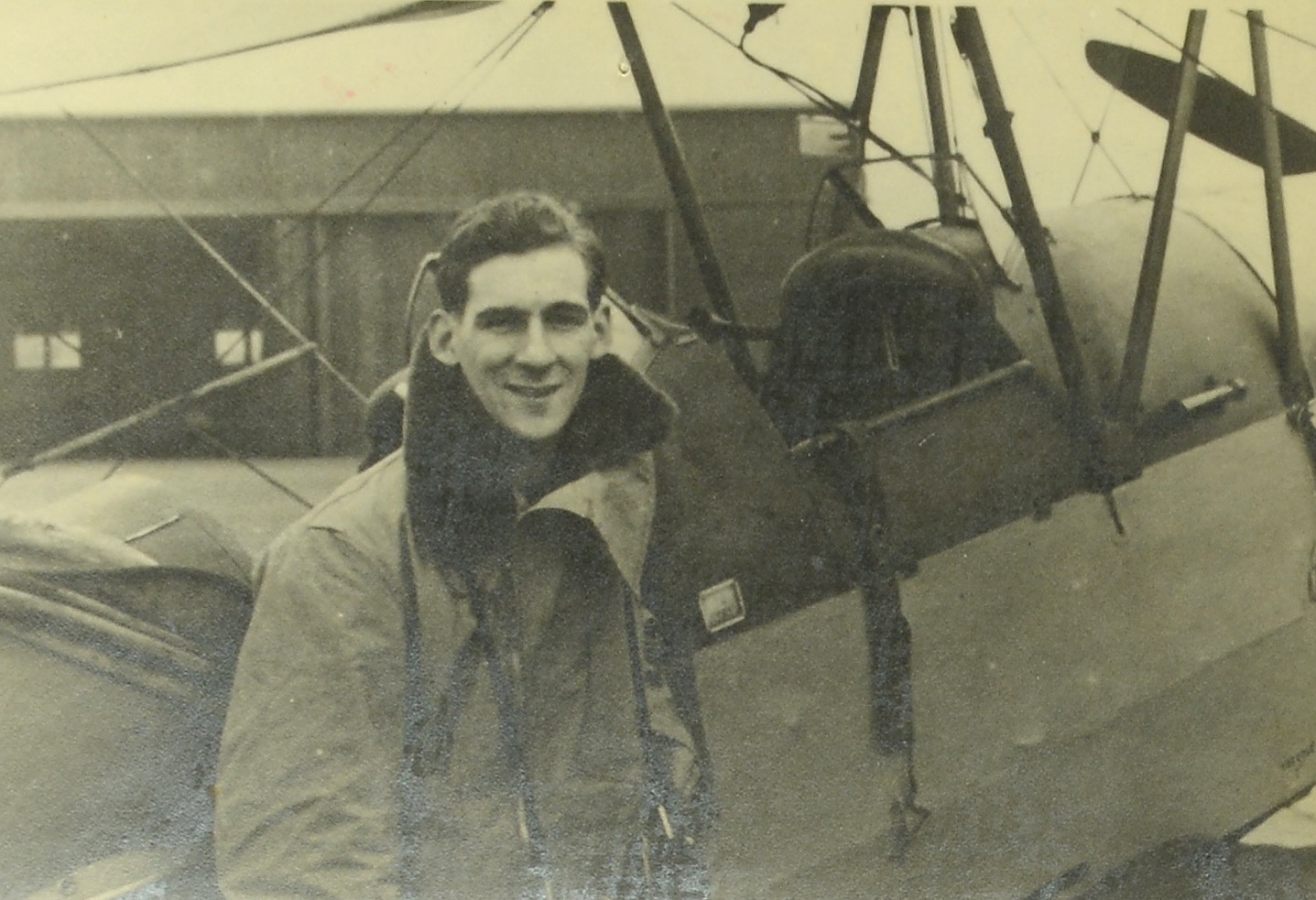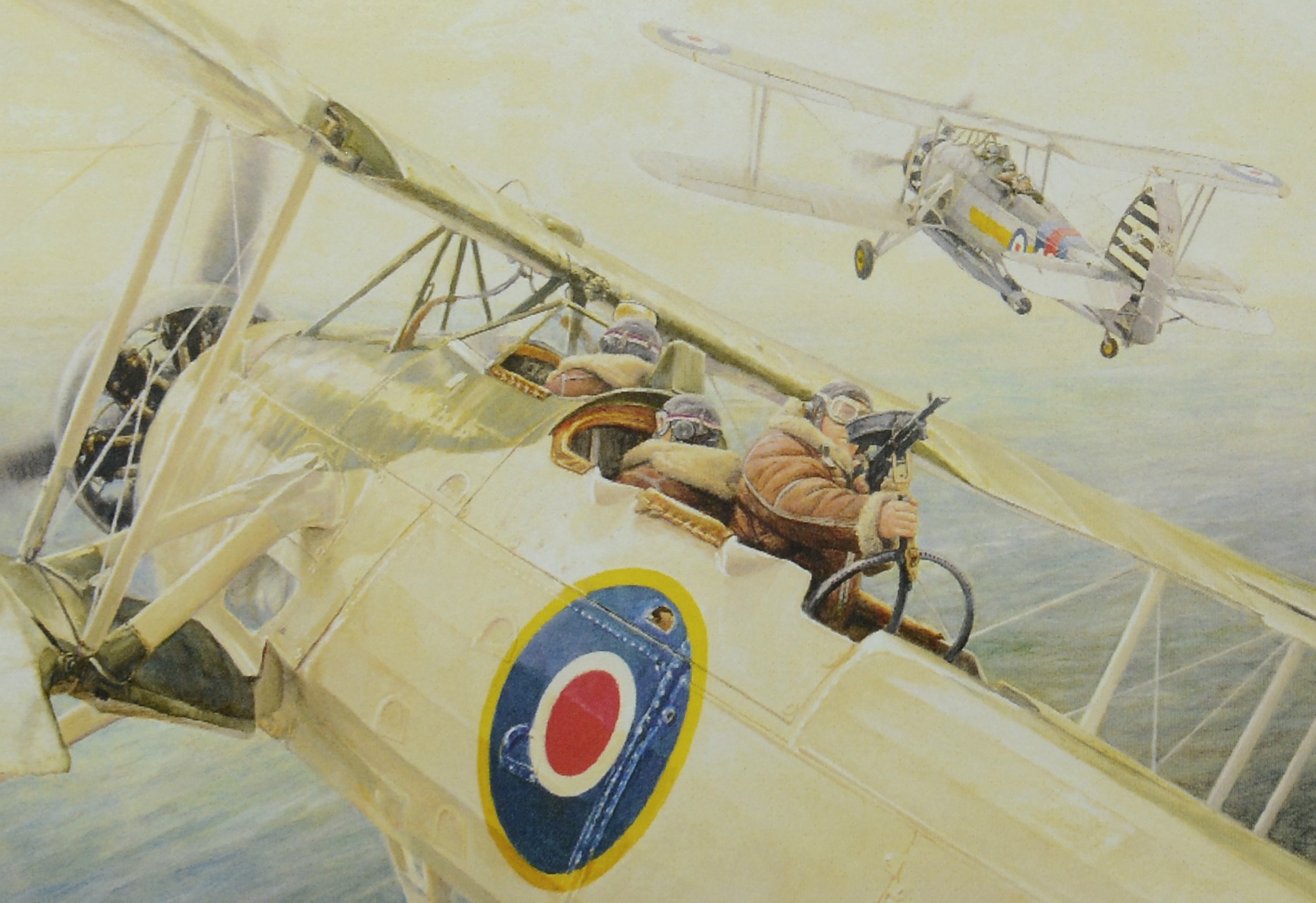‘As Kingsmill, the third to attack, levelled up for his torpedo drop, Samples saw that the fabric of the aircraft's wings had been torn by enemy flak and was full of holes. But the Swordfish flew on until a cannon shell hit the fuselage immediately between them, wounding both men. When the air gunner, Don Bunce, looked up from his Vickers machine gun, the bloody Samples was shouting directions at him and Kingsmill. Then, screaming insults at the Germans, Bunce shot down one plane while Kingsmill struggled to control the Swordfish. Samples was looking at the German gun crews in their sleek, black anti-flash overalls when he felt a sudden burning sensation in his leg. Looking down, he was astonished to see a neat pattern of holes in his flying boots. But although blood was oozing out, he felt no pain, and he failed to notice that Kingsmill had dropped his torpedo, aimed at Prinz Eugen from about 2,000 yards. With the aircraft on fire and ripped by the flak, Kingsmill struggled to maintain height. He tried to communicate with Samples, not realising that the speaking tube had been shattered. Despite his wounds, Samples climbed up and shouted into his ear: “We'll never make it, ditch near those MTBs" – pointing towards some British boats which had also attacked the Germans. Shortly afterwards the three men were pulled from the drink by friendly hands … ’ The fate of Swordfish W5907 on 12 February 1942, as described in the obituary notice of Lieutenant-Commander ‘Mac’ Samples, D.S.O.; The Daily Telegraph, August 2009, refers. The post-war diplomatic service C.M.G., O.B.E., and outstanding Second War ‘Channel Dash’ D.S.O. group of eight awarded to Lieutenant-Commander R. M. ‘Mac’ Samples, 828 Naval Air Squadron, Fleet Air Arm Flying immediately behind the force leader’s aircraft, as observer to ‘Pat’ Kingsmill in Swordfish W5907, amidst curtains of flak and swathes of cannon shell, Samples sustained extensive wounds, including a smashed ankle and leg, and shrapnel to his right hand, backside and lower back; of the six Swordfish that went in, none returned, just five airmen out of 18 living to tell the tale. The force’s leader, Lieutenant-Commander Eugene Esmonde, D.S.O., R.N., was awarded a posthumous V.C., a distinction which recognised the valour of all of 825’s participating aircrew: ‘Their aircraft shattered, undeterred by an inferno of fire, they carried out their orders, which were to attack the target. Not one came back. Theirs was the courage which is beyond praise’ The Most Distinguished Order of St. Michael and St. George, C.M.G., Companion’s neck badge, silver-gilt and enamels, complete with neck cravat in its Spink, London case of issue; Distinguished Service Order, G.VI.R., silver-gilt and enamels, reverse of the suspension bar officially dated ‘1942’, with its Garrard & Co. case of issue; The Most Excellent Order of the British Empire, O.B.E. (Civil), Officer’s 2nd type breast badge, silver-gilt; 1939-45 Star; Air Crew Europe Star; Defence and War Medals 1939-45; Nepal, Coronation Medal 1955, generally very fine or better (8) £30,000-£40,000 --- Importation Duty This lot is subject to importation duty of 5% on the hammer price unless exported outside the UK --- --- C.M.G. London Gazette 4 June 1971. D.S.O. London Gazette 3 March 1942 – joint citation: Temporary Acting Sub-Lieutenant (A.) Charles Major Kingsmill, R.N.V.R. Temporary Sub-Lieutenant (A.) Reginald McCartney Samples, R.N.V.R., who were Pilot and Observer of a Swordfish that was badly hit early in the action by cannon shells from an enemy fighter. Both were wounded but with part of the aircraft shot away, and the engine and upper wings in flames, they flew on undaunted until they had taken aim and fired their torpedo. They then turned and tried to come down near some ships, but these opened fire, so they flew on until their engine stopped and their aircraft came down into the sea. Soon afterwards they were picked up, still cheerful and dauntless, by one of H.M. vessels.’ O.B.E. London Gazette 1 January 1963. Reginald McCartney Samples was born in Liverpool on 11 August 1918 and was educated at Rhyl Grammar School and Liverpool University, where he was reading commerce when war was declared. It was direct from university that he joined the Fleet Air Arm in the summer of 1940 and, on completing his training as an observer, he was posted to No. 825 Naval Air Squadron (N.A.S.) in January 1942; some sources state that he was present in the Bismarck action of May 1941, whilst under training. Samples’ hitherto unpublished account of his part in the Channel Dash action, as requested by Commander Prentice, R.N., and dated at Mount Vernon Hospital, Northwood, Middlesex, on 26 June 1942, is reproduced here: ‘Sir, I have the honour to submit, as requested, a report on the operation carried out by 825 Squadron against the German warships Scharnhorst, Gneisenau and Prince Eugen in the Channel on Feb. 12th last. May I first of all thank you, sir, for your congratulatory letter and apologies for my belated reply due to difficulties in writing with a damaged hand. 825 Squadron, consisting of 6 Swordfish aircraft and led by Lt. Cdr. Esmonde, took departure over Ramsgate at 1220 on 12th Feb. at a height of 50 ft. to contact the German warships on a course of 142 (T). Kingsmill (my pilot), N.A. Bunce and myself were in ‘C’ machine of the first sub-flight, the second sub-flight being led by Lt. Thompson, R.N. Visibility was patchy and hazy over the sea (there were several feet of snow and ice on land) and though we sighted at about 4-5 miles, the Gneisenau and Eugen were only vaguely to be seen, Scharnhorst apparently being farther north and not visible. The enemy had a screen of destroyers and to make the run on Gneisenau we had to pass between two of them at a range of approx. 3 miles to port and starboard of us. Very heavy flak was encountered at this time and at about 5000 yds. We were attacked by a squadron of Me. 109s which peeled off from about 1500 ft. on our port quarter and came in singly from astern, setting all mainplanes on fire and destroying part of the tail unit and fuselage. Simultaneously, we were hit by flak coming up through the deck, and Kingsmill and myself were both wounded in the left foot and leg. It was very apparent that to maintain the run in would be ridiculous, particularly in the face of enemy F.W. 190s forming astern, so we took a staggering, avoiding turn to port, noticing as we did that the C.O., who had obviously been hit badly, stalled about 200 yds. ahead of us and hit the water. Our aircraft was rather difficult to manage but we were able to come round in a circle and make a second run. It is rather interesting to note here that we passed below the second sub-flight coming into the attack. They were tucked in very close formation – a fact which no doubt explains their total loss. On our second run we were again attacked by fighters but dropped our torpedo at about 2000 yds. and again took avoiding action. We did not claim a hit, as we did not wait and see! Our aircraft was in very bad shape and was lolloping rather than flying along; the rockets and distress signals in the dinghy were exploding in the wing and creating a sight that might have been pleasant to see could we have appreciated it at the time. I endeavoured to get a course home, and the A.G. took over look-out astern, but unfortunately some M.T.Bs which my pilot made for turned out to be E-boats and gave us a hot reception with...














